Introduction
Critical thinking is traditionally defined as “a process involved in any research activity” (Gorjian, Pazhakh & Parang, 2012).
Creative thinking is viewed as a “process underlying production of creative products” (Tsai, 2012, p. 312).
Though introducing young children to a variety of creative ideas and interesting concepts, independent movies, (i.e., “ indie movies”) are rather hard to market due to their unusual design.

Why Using Critical and Creative Thinking?
The goal concerned representing people to an unusual concept and, therefore breaking their traditional perception of the subject matter; therefore, critical thinking had to be applied.
Children could be easily averted from the movie due to its specific look, which required a creative approach to introducing them to an original idea and preparing them for the experience. Thus, the elements of creative thinking had to be applied.
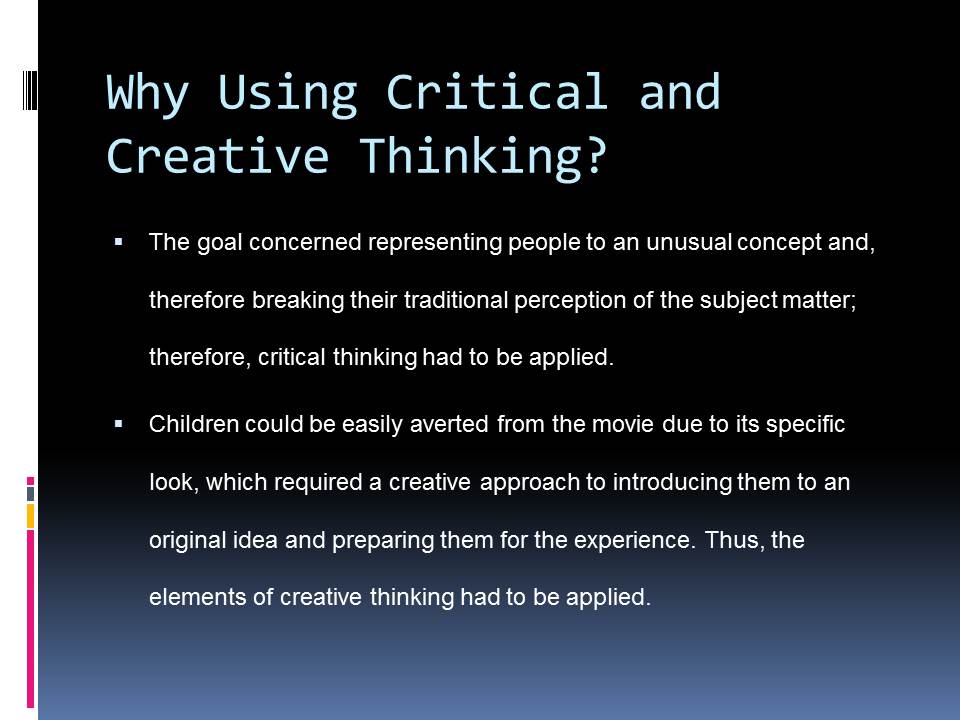
Decision-Making Process, Stage 1: Brainstorming
- Production of ideas and the search for the concepts related to movies and their promotion was carried out;
- Creative thinking was used for identifying the concepts, which would have been overlooked otherwise, such as the creation of a flipbook based on the movie with a cliffhanger in the end;
- Critical thinking was not used expansively at the given stage, as the latter presupposed generating ideas and not discussing them.
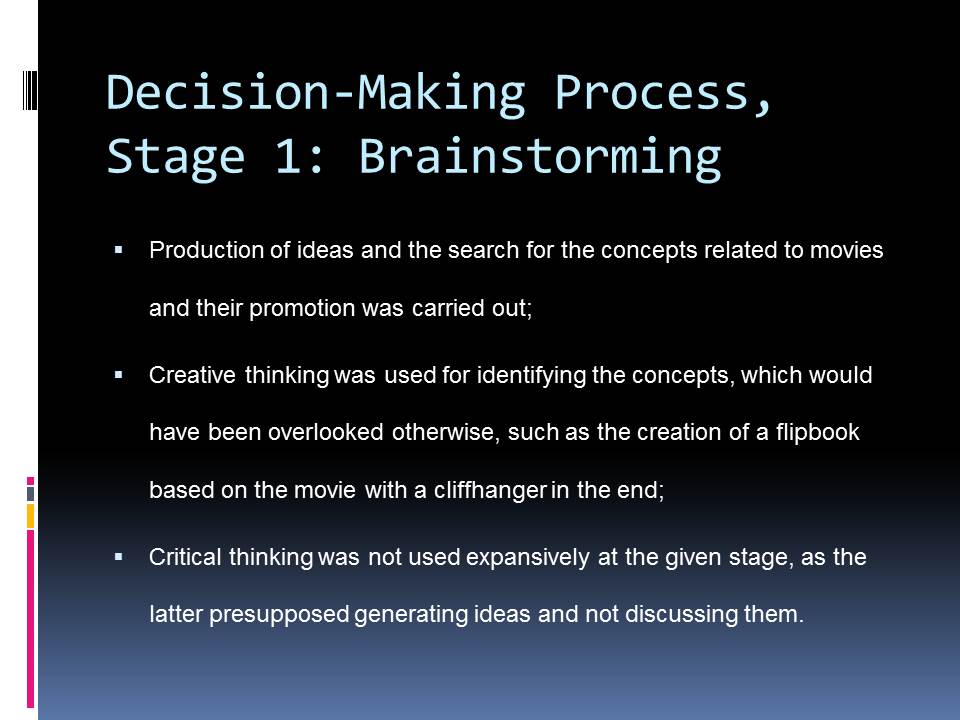
Decision-Making Process, Stage 2: Conceptualizing
- The identification of the key priorities was made at the specified stage;
- The location of the most adequate options for attracting the public’s attention was chosen (free flipbooks and the use of free modern media tools);
- The critical thinking skills allowed for defining the most affordable and favorable tools and conceptualizing the subject matter (Lee & Therriault, 2012);
- The creative thinking played a minor role at the given stage.
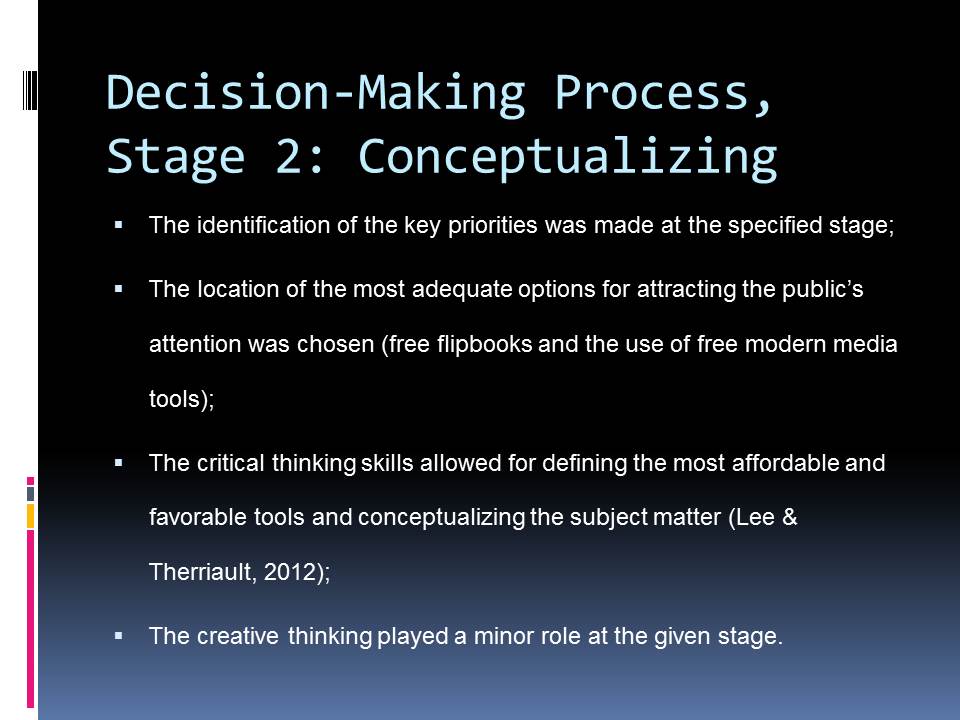
Decision-Making Process, Stage 3: The Choice
- Designing the unique look of the flipbook and the stylistic choices for the social media advertisement obviously required creative thinking;
- Identification of the messages, which would attract both children and adults to the project and, therefore, trick them into watching the movie, needed critical thinking.
- Location of the tools, which would help the target audience spot the message and, therefore, pay attention to it, required both.
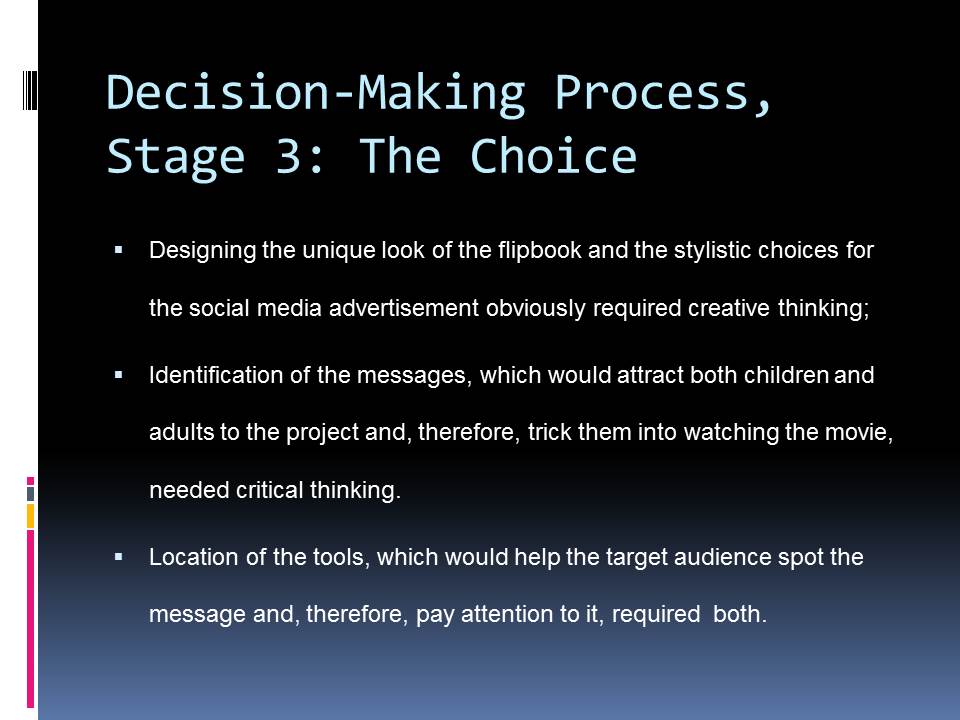
Decision-Making Process, Stage 4: Analysis
- Creating hypothesis concerning the effect, which the media in question would have on the target audience was the critical thinking stage.
- Analyzing the effects, which each of the approaches identified as acceptable would have, also qualified as the critical thinking stage.
- Considering the tools for enhancing the emotional effect left by the tool under analysis should be viewed as the incorporation of both elements.
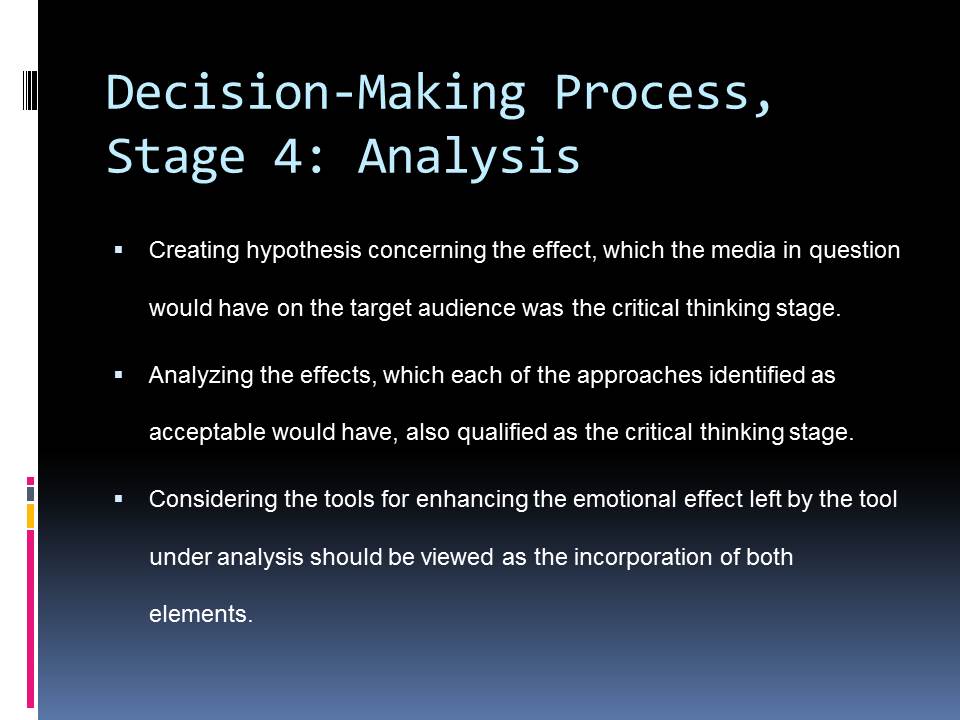
Characteristics of Thinking Modes
Critical
- A stronger emphasis on reasoning;
- Active use of logics as the key tool for defining the adequate option;
- Objective reasoning as the basis for the choice.
Creative
- Emotional connection with the subject matter;
- Personal attachment to a specific option as the key to making a decision;
- Subjective reasoning behind the choice.
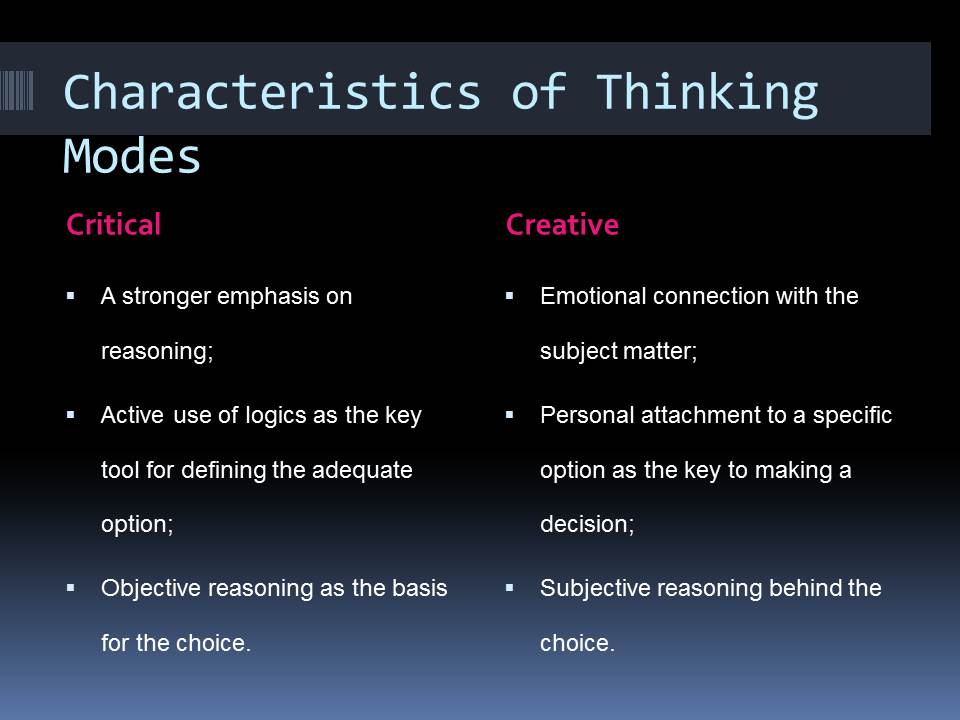
Promoting Quality: Critical Approach
Critical thinking must be grounded in logic. Therefore, the incorporation of the factors, which spur logical thinking, is encouraged for boosting the process.
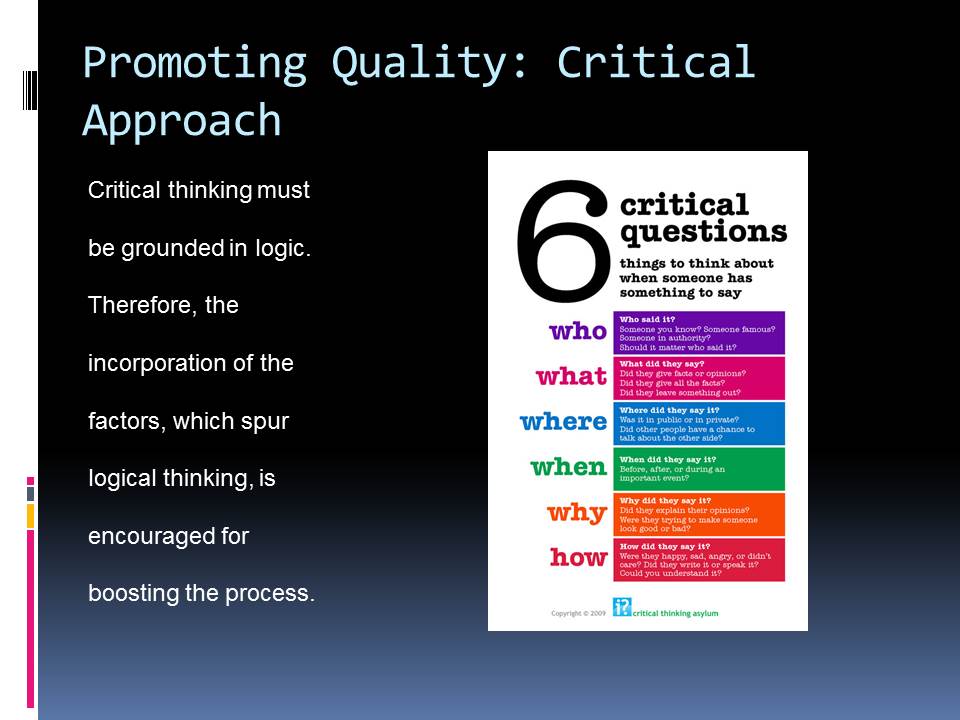
Promoting Quality: Creative Approach
Creative thinking is based on the evaluation of emotions that a specific factor triggers. Hence, it is crucial that creative thinking occur within proper environment.
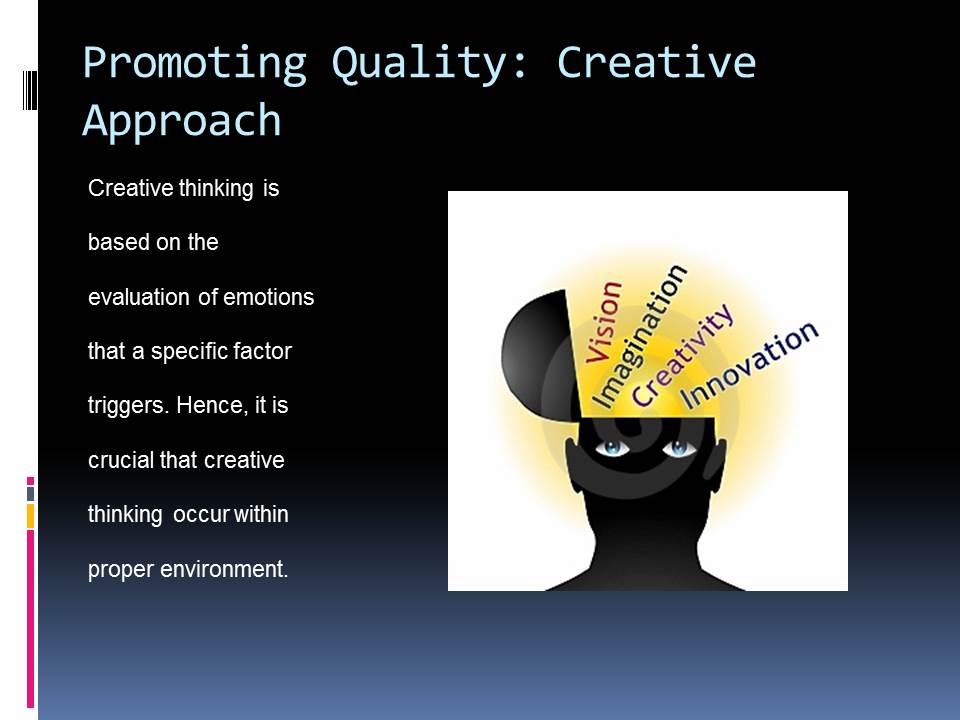
Why Higher Level of Thought?
Critical Thinking
- Allows for identifying the key factors fast and efficiently;
- Helps analyze available options;
- Triggers the discovery of new pathways for decision-making (Fahim & Ghamari, 2011).
Creative thinking
- Allows for viewing the elements of routine in a different light;
- Helps generate new and original ideas;
- Spurs unusual approaches towards the solution of complex problems (Halim, Kingsbury & Drage, 3013).
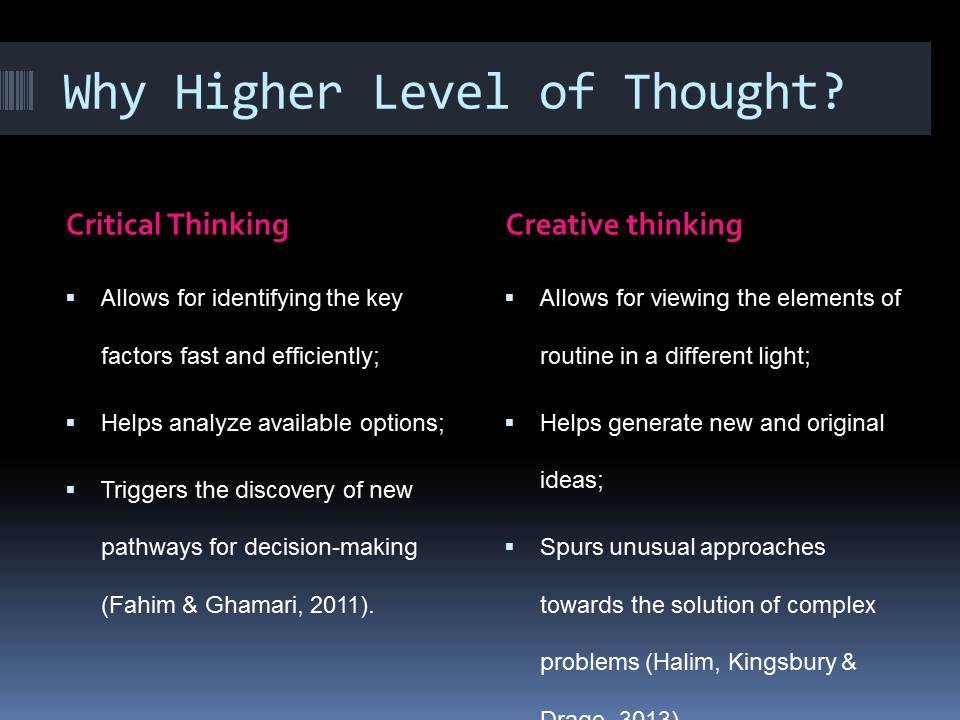
Reference List
Gorjian, H., Pazhakh, A. & Parang, K. (2012). An Investigation on the Effect of Critical Thinking (CT) Instructions on Iranian EFL Learners’ Descriptive Writing: A Case of Gender Study. Advances in Asian Social Science, 1(1), 114-118.
Fahim, M. & Ghamari, M. R. (2011). Critical thinking in education: Globally developed and locally applied. Theory and Practice in Language Studies, 1(11), 1632-1638.
Halim, H. A., Kingsbury, M. & Drage, C. (3013). Nurturing creativity: Whose Wisdom is of most worth? Creative Education, 4(9), 1-4.
Lee, C. E. & Therriault, D. J. (2012). On the Cognitive Benefits of Cultural Experience: Exploring the Relationship between Studying Abroad and Creative Thinking. Applied Cognitive Psychology, 26(5), 768-778.
Tsai, K. C. (2012). Dance with critical thinking and creative thinking in the classroom. Journal of Sociological Research, 3(2), 312-324.